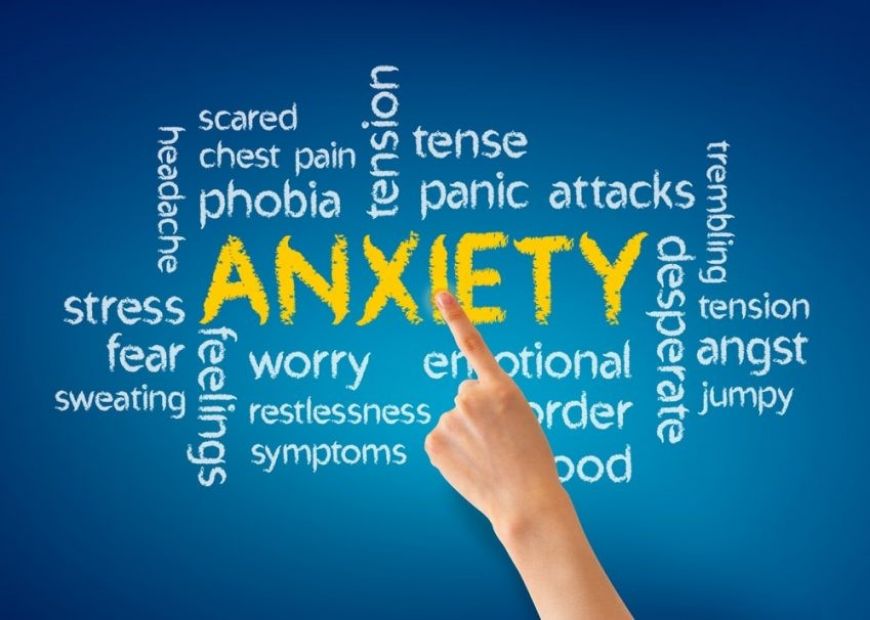Understanding AnxietyLeave a comment
What is anxiety?
Anxiety: A Complex, Multidimensional Experience
Anxiety is a complex, multidimensional experience that goes beyond a simple, unidimensional phenomenon. According to Lang (1970), anxiety can be understood through three separate dimensions: subjective experience, behavioral responses, and physiological responses. This experience can be described as apprehension, tension, or uneasiness stemming from the anticipation of danger, which may be internal or external. The manifestations of anxiety and fear include motor tension, autonomic hyperactivity, apprehensive expectation, and vigilance and scanning (National Institute of Mental Health, 2025).
Dimensions of Anxiety
- Subjective Experience: Verbal reports of subjective experiences often include feelings of tension, apprehension, and a sense of impending danger. People may also express concerns about their inability to cope in the future (National Institute of Mental Health, 2025).
- Behavioral Responses: Behavioral manifestations of anxiety include avoidance behaviors, impaired speech and motor coordination, and performance deficits (National Institute of Mental Health, 2025).
- Physiological Responses: Physiological symptoms include muscle tension, increased heart rate, elevated blood pressure, rapid respiration, dry mouth, and nausea (National Institute of Mental Health, 2025).
When Does Anxiety Become Pathological?
Anxiety becomes abnormal when it is persistent and occurs without an objective danger or threat. This leads to ineffective and self-defeating behaviors. Symptoms should be present most days for several weeks or months. Common elements of pathological anxiety include:
- Apprehension: Worries about future misfortunes, feeling "on edge," and difficulty concentrating.
- Motor Tension: Symptoms such as restless fidgeting, tension headaches, trembling, and an inability to relax.
- Autonomic Overactivity: Symptoms such as light-headedness, sweating, tachycardia, tachypnoea, dizziness, and dry mouth.
While transient appearances of other symptoms (e.g., depression) do not rule out generalized anxiety disorder, these should not fulfill the full criteria for other disorders like panic disorder or obsessive-compulsive disorder (National Institute of Mental Health, 2025).
Relevance of Anxiety Disorders in Primary Healthcare
Anxiety disorders are prevalent in primary healthcare settings, and their symptoms often overlap with those of other conditions, such as heart attacks, depression, and alcohol dependence. The prevalence of mixed anxiety and depression is high in the general population (Anxiety and Depression Association of America, 2025). Many patients with anxiety disorders may present with somatic symptoms, such as chest pain or gastrointestinal issues, which can overshadow the underlying psychological problem (National Institute of Mental Health, 2025).
Clinical Features of Anxiety Disorders
- Generalized Anxiety Disorder: Symptoms are "free-floating" and experienced throughout the day, affecting daily functioning (National Institute of Mental Health, 2025).
- Situational Anxiety Disorders: These include phobic anxiety disorders such as:
- Simple Phobia: Fear of specific objects or situations, often leading to avoidance (National Institute of Mental Health, 2025).
- Social Phobia: Fear of situations in which one is observed or criticized by others (National Institute of Mental Health, 2025).
- Agoraphobia: Fear of situations where escape may be difficult or help may not be available (National Institute of Mental Health, 2025).
- Panic Disorder: Characterized by sudden, overwhelming fear, often with physical symptoms like chest pain or shortness of breath. Panic attacks typically peak within 10 minutes and subside within 30 minutes (Anxiety and Depression Association of America, 2025).
Obsessive-Compulsive Disorder (OCD)
OCD is marked by:
- Obsessions: Recurrent, intrusive thoughts or images that cause anxiety (National Institute of Mental Health, 2025).
- Compulsions: Repetitive behaviors or mental acts performed to reduce anxiety or prevent feared events (National Institute of Mental Health, 2025).
To diagnose OCD, symptoms must last for more than 1 hour per day and significantly impact daily functioning (Anxiety and Depression Association of America, 2025).
Management of Anxiety Disorders
Treatment of anxiety disorders consists of three main components: psychological treatment, physical (pharmacological) treatment, and social treatment.
- Psychological Treatment: Techniques such as brief supportive psychotherapy, behavior therapy, and anxiety management strategies (National Institute of Mental Health, 2025).
- Physical Treatment: Pharmacological treatments include anxiolytics (e.g., benzodiazepines), antidepressants (e.g., paroxetine, venlafaxine), and beta-blockers (e.g., propranolol) (National Institute of Mental Health, 2025).
- Social Treatment: Addressing the social factors contributing to the disorder, such as family involvement, school liaison, and home visits (Anxiety and Depression Association of America, 2025).
Conclusion
Anxiety is a prevalent and multifaceted condition, with significant implications for patients' health and well-being. Effective management involves a combination of psychological, physical, and social treatments, and early diagnosis is crucial for improving patient outcomes.
References
- National Institute of Mental Health. (2025). Anxiety Disorders. Retrieved from: https://www.nimh.nih.gov/health/topics/anxiety-disorders
- Anxiety and Depression Association of America. (2025). Anxiety Disorders. Retrieved from: https://adaa.org
Lang, P. J. (1970). The role of anxiety in the anxiety-fear continuum. Journal of Abnormal Psychology, 75(2), 136-148.

